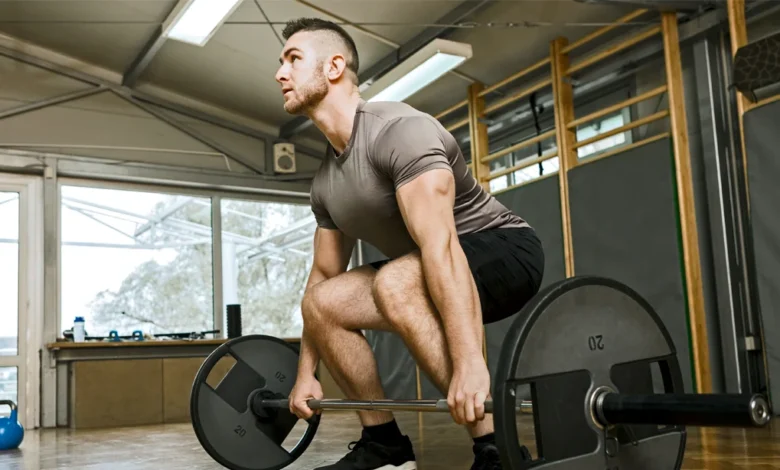Stretching With Assistance for Powerlifters

Do you know Stretching With Assistance for Powerlifters? Assisted stretching can be a crucial component of your training program if you’re a powerlifter trying to improve both in the weight room and on the platform. It is a type of physical therapy in which a patient is stretched by a professional. The practitioner gently stretches the patient’s muscles using their hands or specialized equipment.
Benefits of Assisted Stretching
Increased Range of Motion
Your range of motion may improve with assisted stretching, allowing you to lift bigger loads with a lower risk of injury. Assisted stretching’s enhanced flexibility can also aid in reducing pain or discomfort in tense or strained muscles. You may be able to lift weights more effectively as a result.
Read More: How Many Different Pre-Workout Formula Types Exist?
Improved Posture
Your performance in the gym can be significantly impacted by poor posture, particularly during powerlifting exercises like the squat and deadlift. Stretching helps you become more mobile, which helps you lift with better form and perform better over time with fewer injuries.
Faster Recovery Time
The increased blood flow that results from assisted stretching may hasten your body’s recovery from strenuous weightlifting sessions. Regularly performing assisted stretches will strengthen your flexibility, which may help you feel less tired and sore after working out.
Reduced Risk of Injury
By easing tension in the muscles, tendons, and ligaments, assisted stretching can increase the body’s resistance to damage when performing large lifts or quick movements like Olympic lifts or plyometrics. While performing dynamic workouts like jumping squats or burpees, an increased range of motion helps lessen joint stress.
Improved Mental Clarity & Focus

Using assisted stretching during exercises or contests might increase concentration and mental clarity. You can concentrate on what counts most—getting stronger—by concentrating on good form and technique rather than worrying about potential injuries.
Stretching With Assistance for Powerlifters
IT Band Stretch
Start by laying face down on a mat or other soft surface and extending your legs straight back. One ankle should be crossed over the thigh on the opposing side so it lies above the knee. Once you feel a stretch in the glutes, have your partner gently lift up while holding both of your ankles in place.
Hip Flexor Stretch
With one knee bent and the other extended straight in front of you, begin by lying flat on your back. Then, as close to your chest as you can without experiencing pain or discomfort, bring the bent knee. until you experience a stretch in the hip flexors, have your spouse gently press on the bent knee (the muscles in front of the hip).
Gluteal Stretch
Lay on your back, legs bent, and feet flat on the floor to start. One ankle should be crossed over the thigh on the opposing side so it lies above the knee. To feel a stretch in your glutes, have your partner slowly pull up while holding both of your ankles in a grip.
Ankle Release
Ankle release focuses on tight calves and ankles, which might stiffen up during powerlifters’ regular squatting or running activities. Your feet should be somewhat wider than shoulder-width apart when you stand opposite your partner. They should hold onto your leg just below the knee, and you should gently push against their hold.
Read More: Six Simple Keto Recipes that Work to Burn Fat
Shoulder Mobility Stretch
A portable weight like a dumbbell or an elastic band is frequently used for this stretch. Start by standing straight up with your arms out in front of you at shoulder height. After that, move them around in circles backward and forward. For added support, have your partner lightly touch each arm as you move.
Reap the Benefits of Assisted Stretching
Using assisted stretching to increase your powerlifting performance can be beneficial. Your range of motion will expand, your flexibility will improve, and your risk of injury will go down. You can perform a wide variety of stretching activities. Discover which ones suit you the best. If you don’t know where to begin, consult a stretch specialist to develop a stretching regimen that is suitable for you.







